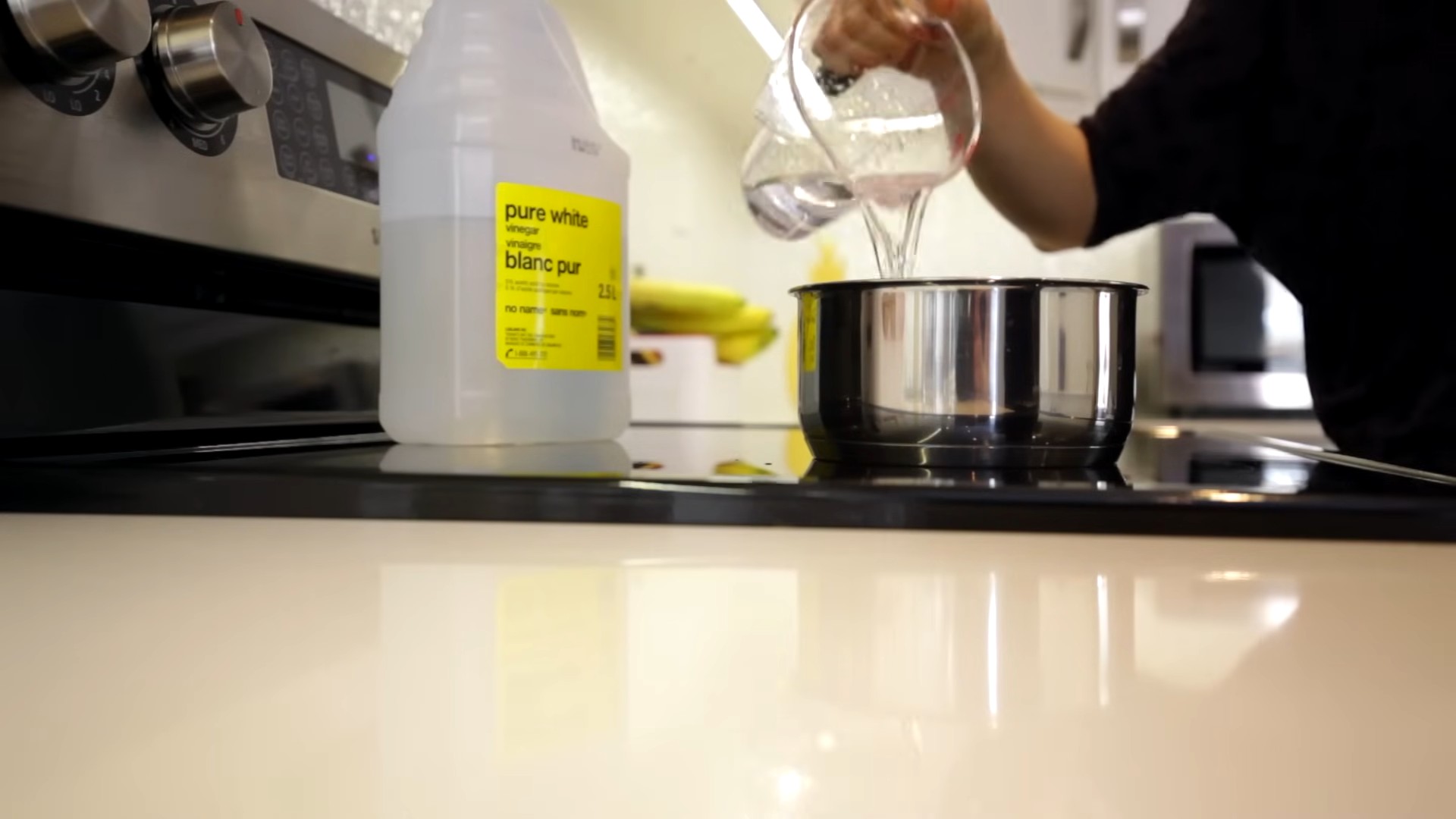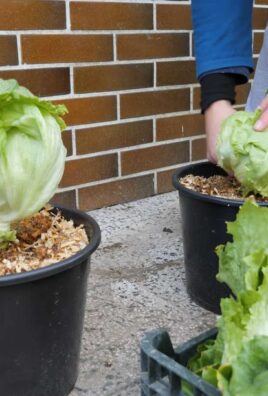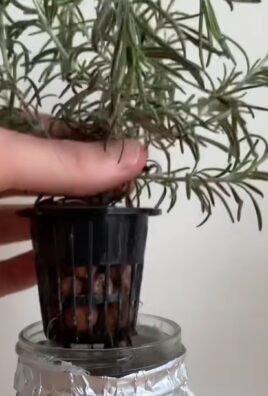Growing Bok Choy for Beginners can seem daunting, but trust me, it’s easier than you think! Have you ever dreamt of stepping outside your back door and harvesting fresh, crisp greens for a delicious stir-fry? Or maybe you’re just looking for a rewarding and sustainable way to add more vegetables to your diet. Well, you’ve come to the right place!
Bok choy, also known as pak choi, has been a staple in Chinese cuisine for centuries, with evidence suggesting its cultivation dates back to the 5th century AD. Its mild, slightly sweet flavor and crisp texture have made it a beloved ingredient across Asia and, increasingly, around the world. But you don’t need to be a seasoned gardener to enjoy the benefits of this versatile vegetable.
In this DIY guide, I’m going to share my top tips and tricks for growing bok choy for beginners, even if you have limited space or experience. We’ll cover everything from seed selection and planting to watering, fertilizing, and pest control. Imagine the satisfaction of harvesting your own homegrown bok choy, knowing exactly where it came from and how it was grown. Plus, growing your own food is a fantastic way to save money, reduce your environmental impact, and connect with nature. So, let’s get started and unlock the secrets to a bountiful bok choy harvest!

Growing Bok Choy: A Beginner’s Guide to Delicious Homegrown Greens
Hey there, fellow gardening enthusiasts! I’m so excited you’re thinking about growing bok choy. It’s a fantastic vegetable – packed with nutrients, easy to grow, and incredibly versatile in the kitchen. Trust me, once you taste homegrown bok choy, you’ll never want to go back to the store-bought stuff! This guide will walk you through everything you need to know to successfully grow bok choy, even if you’re a complete beginner. Let’s get our hands dirty!
Choosing the Right Bok Choy Variety
First things first, let’s talk about varieties. Bok choy comes in different shapes and sizes, and choosing the right one for your garden is important. Here are a few popular options:
* Shanghai Bok Choy: This is probably the most common type. It has light green stems and dark green leaves. It’s known for its mild flavor and quick growth.
* Baby Bok Choy: As the name suggests, this is a smaller version of Shanghai bok choy. It’s perfect for stir-fries and salads, and it matures even faster.
* Canton Bok Choy (also called Pak Choi): This variety has broader, white stems and dark green leaves. It has a slightly stronger flavor than Shanghai bok choy.
* Purple Lady Bok Choy: If you want to add some color to your garden (and your plate!), this is the one for you. It has beautiful purple leaves and a mild, sweet flavor.
I personally love growing Shanghai bok choy because it’s so reliable and easy to find seeds for. But feel free to experiment and see which variety you like best!
Preparing Your Garden for Bok Choy
Bok choy thrives in cool weather, so timing is key. I usually plant my bok choy in early spring or late summer for a fall harvest. Here’s what you need to do to get your garden ready:
* Sunlight: Bok choy needs at least 4-6 hours of sunlight per day. Choose a spot in your garden that gets plenty of sun, especially in the cooler months.
* Soil: Bok choy prefers well-drained, fertile soil. Before planting, amend your soil with compost or other organic matter to improve its drainage and nutrient content. A slightly acidic to neutral soil pH (around 6.0 to 7.0) is ideal.
* Location: Consider the space you have available. Baby bok choy can be planted closer together than larger varieties. Make sure your chosen spot is protected from strong winds, which can damage the leaves.
Planting Bok Choy: Seeds vs. Transplants
You can start bok choy from seeds or transplants. I’ve done both, and I find that starting from seeds is just as easy and often more rewarding.
* Starting from Seeds:
1. Direct Sowing: This is my preferred method. Sow seeds directly into the garden about 1/4 to 1/2 inch deep and 1-2 inches apart.
2. Thinning: Once the seedlings emerge and have a few true leaves, thin them to 6-8 inches apart for larger varieties and 4-6 inches apart for baby bok choy. Don’t just pull them out! Gently snip them at the soil line to avoid disturbing the roots of the remaining plants.
3. Timing: Plant seeds 4-6 weeks before the first expected frost in the fall, or as soon as the soil can be worked in the spring.
* Starting from Transplants:
1. Purchase Healthy Transplants: Look for transplants that are healthy and green, with no signs of pests or diseases.
2. Planting: Dig holes that are slightly larger than the root ball of the transplants. Gently remove the transplants from their containers and place them in the holes.
3. Spacing: Space the transplants according to the mature size of the variety you’re growing (6-8 inches for larger varieties, 4-6 inches for baby bok choy).
4. Watering: Water the transplants thoroughly after planting.
Caring for Your Bok Choy Plants
Once your bok choy plants are in the ground, it’s time to give them some TLC. Here’s what you need to do to keep them happy and healthy:
* Watering: Bok choy needs consistent moisture, especially during hot weather. Water deeply and regularly, aiming for about 1 inch of water per week. Avoid overhead watering, which can lead to fungal diseases. I like to use a soaker hose or drip irrigation to water my bok choy plants.
* Fertilizing: Bok choy is a heavy feeder, so it benefits from regular fertilization. I like to use a balanced organic fertilizer, such as fish emulsion or compost tea, every 2-3 weeks. Follow the instructions on the fertilizer package.
* Weeding: Keep your bok choy patch free of weeds, which can compete with the plants for nutrients and water. Hand-pull weeds regularly, or use a hoe to cultivate the soil around the plants.
* Pest Control: Bok choy can be susceptible to pests such as aphids, cabbage worms, and flea beetles.
* Aphids: These tiny insects suck the sap from the leaves, causing them to become distorted and yellow. You can control aphids by spraying them with a strong stream of water, or by using insecticidal soap or neem oil.
* Cabbage Worms: These green caterpillars chew holes in the leaves of bok choy. You can control cabbage worms by hand-picking them off the plants, or by using Bacillus thuringiensis (Bt), a natural insecticide.
* Flea Beetles: These tiny beetles jump when disturbed and chew small holes in the leaves of bok choy. You can control flea beetles by covering the plants with row covers, or by using insecticidal soap or neem oil.
* Bolting: Bolting is when the plant prematurely sends up a flower stalk, usually due to hot weather or stress. Once bok choy bolts, the leaves become bitter. To prevent bolting, plant bok choy in the cool season, provide consistent moisture, and protect the plants from extreme heat. If your bok choy starts to bolt, harvest it immediately.
Harvesting Your Bok Choy
Harvest time is the most rewarding part of gardening! Bok choy is ready to harvest when the leaves are tender and the heads are a good size. This usually takes about 45-50 days for Shanghai bok choy and 30-40 days for baby bok choy.
* Harvesting Individual Leaves: You can harvest individual leaves as needed, starting with the outer leaves. This will allow the plant to continue growing and producing new leaves.
* Harvesting the Whole Head: To harvest the whole head, cut it off at the base with a sharp knife.
* Timing: Harvest bok choy in the morning, when the leaves are crisp and cool.
* Storage: Store bok choy in the refrigerator for up to a week. Wrap it loosely in a plastic bag or damp paper towel.
Troubleshooting Common Bok Choy Problems
Even with the best care, you might encounter some problems while growing bok choy. Here are a few common issues and how to deal with them:
* Yellowing Leaves: This can be caused by a variety of factors, including nutrient deficiencies, overwatering, or underwatering. Check the soil moisture and nutrient levels, and adjust your watering and fertilizing accordingly.
* Holes in Leaves: This is usually caused by pests such as cabbage worms or flea beetles. Inspect the plants for pests and take appropriate action.
* Bolting: As mentioned earlier, bolting is when the plant prematurely sends up a flower stalk. To prevent bolting, plant bok choy in the cool season, provide consistent moisture, and protect the plants from extreme heat.
* Slugs and Snails: These slimy creatures can munch on the leaves of bok choy, especially in damp conditions. You can control slugs and snails by hand-picking them off the plants, or by using slug bait or copper tape.
Delicious Ways to Enjoy Your Homegrown Bok Choy
Now that you’ve harvested your bok choy, it’s time to enjoy it! Bok choy is incredibly versatile and can be used in a variety of dishes. Here are a few of my favorite ways to cook with bok choy:
* Stir-fries: Bok choy is a classic ingredient in stir-fries. Simply chop it up and add it to your favorite stir-fry recipe.
* Soups: Bok choy adds a delicious flavor and texture to soups. Add it to your favorite soup recipe, or try making a bok choy and ginger soup.
* Salads: Baby bok choy is delicious in salads. Simply wash and chop it up, and add it to your favorite salad recipe.
* Steaming

Conclusion
So, there you have it! Growing bok choy at home, even if you’re a complete beginner, is not only achievable but incredibly rewarding. We’ve walked through the entire process, from selecting the right seeds and preparing your soil to nurturing your plants and harvesting your delicious, homegrown bok choy.
Why is this DIY trick a must-try? Because it puts you in control of your food source. You know exactly what goes into your bok choy – no mystery pesticides or questionable farming practices. Plus, the taste of freshly harvested bok choy, bursting with flavor and nutrients, is simply unmatched by anything you can buy in a store. It’s a culinary experience that connects you to nature and elevates your meals.
But the benefits extend beyond just taste and control. Growing your own bok choy is a fantastic way to reduce your carbon footprint, support sustainable practices, and even save money on your grocery bill. It’s a win-win-win situation!
Don’t be afraid to experiment with variations! Try growing different varieties of bok choy, such as Shanghai bok choy with its pale green stalks or baby bok choy for a more delicate flavor. You can also explore different planting methods, like container gardening if you have limited space, or succession planting to ensure a continuous harvest throughout the growing season. Consider companion planting with herbs like dill or chamomile to deter pests and enhance the flavor of your bok choy.
Growing bok choy is a journey of discovery, and there’s always something new to learn. The most important thing is to get started! Don’t let fear of failure hold you back. Even if you encounter challenges along the way, remember that every mistake is a learning opportunity.
We are confident that with the knowledge and tips shared in this article, you’ll be well on your way to enjoying a bountiful harvest of delicious, homegrown bok choy. So, grab your seeds, get your hands dirty, and experience the joy of growing your own food.
We’d love to hear about your experiences! Share your photos, tips, and challenges in the comments below. Let’s create a community of bok choy enthusiasts and inspire others to embrace the joys of home gardening. Happy growing!
Frequently Asked Questions (FAQ)
What is the best time of year to start growing bok choy?
Bok choy is a cool-season crop, meaning it thrives in cooler temperatures. The best time to start growing bok choy is either in early spring or late summer/early fall. For a spring crop, start seeds indoors 4-6 weeks before the last expected frost. For a fall crop, direct sow seeds in the garden 6-8 weeks before the first expected frost. Avoid planting during the hottest months of summer, as high temperatures can cause bolting (premature flowering), which makes the leaves bitter.
How much sunlight does bok choy need?
Bok choy needs at least 4-6 hours of sunlight per day to grow well. However, in hotter climates, providing some afternoon shade can help prevent bolting. If you’re growing bok choy indoors, use grow lights to supplement natural sunlight.
What kind of soil is best for growing bok choy?
Bok choy prefers well-drained, fertile soil that is rich in organic matter. Amend your soil with compost or well-rotted manure before planting to improve drainage and fertility. The ideal soil pH for bok choy is between 6.0 and 7.5.
How often should I water bok choy?
Bok choy needs consistent moisture to thrive. Water deeply and regularly, especially during dry periods. Aim to keep the soil consistently moist but not waterlogged. Mulching around the plants can help retain moisture and suppress weeds.
How do I prevent pests and diseases from affecting my bok choy?
Several pests and diseases can affect bok choy, including aphids, cabbage worms, flea beetles, and downy mildew. To prevent problems, practice good garden hygiene, such as removing plant debris and weeds. Use row covers to protect plants from pests. Inspect plants regularly for signs of pests or diseases and take action promptly. Organic pest control methods, such as insecticidal soap or neem oil, can be effective. Ensure proper spacing between plants to promote air circulation and reduce the risk of fungal diseases.
When is bok choy ready to harvest?
Bok choy can be harvested at any stage of growth, depending on your preference. Baby bok choy can be harvested when the leaves are only a few inches long, while mature bok choy can be harvested when the heads are 12-18 inches tall. To harvest, cut the entire head at the base of the plant with a sharp knife. You can also harvest individual leaves as needed, starting with the outer leaves.
Can I grow bok choy in containers?
Yes, bok choy grows well in containers. Choose a container that is at least 12 inches deep and wide to allow enough room for the roots to grow. Use a well-draining potting mix and water regularly. Container-grown bok choy may need more frequent watering than plants grown in the ground.
How do I store harvested bok choy?
To store harvested bok choy, rinse it thoroughly and pat it dry. Wrap the bok choy in a damp paper towel and store it in a plastic bag in the refrigerator. Bok choy can be stored for up to a week.
What are some ways to use bok choy in cooking?
Bok choy is a versatile vegetable that can be used in a variety of dishes. It can be stir-fried, steamed, boiled, or added to soups and stews. Bok choy is also delicious raw in salads. The entire plant is edible, including the leaves and stalks.
My bok choy is bolting. What can I do?
Bolting is when a plant prematurely flowers, usually due to stress from heat or lack of water. Once bok choy bolts, the leaves become bitter. To prevent bolting, plant bok choy at the right time of year, provide adequate water, and protect plants from extreme heat. If your bok choy bolts, you can still harvest the leaves, but they may not taste as good. You can also try cutting off the flower stalks to encourage the plant to produce more leaves.




Leave a Comment